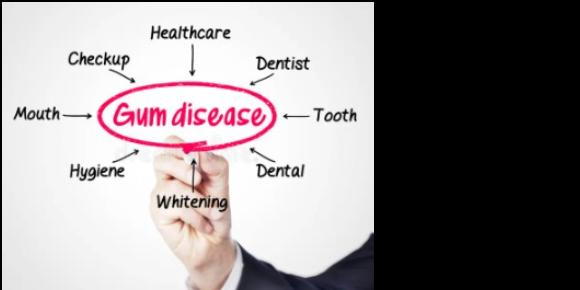
Hello Friends!
You may have heard the term “gum disease” but what do you know about it?
More than half of men and a third of women over age 30 have some degree of gum disease. Everyone is susceptible because even healthy mouths can have the bacteria that can cause gum disease. The bacteria, along with food residue, build up to create a sticky, colorless film called plaque. Left untreated, plaque can trigger inflammation and infection. Mild inflammation (gingivitis) can usually be corrected with improved oral hygiene. Without proper preventive care, however, the bacteria can make the gums recede or pull away from the teeth, forming infected pockets that can destroy bone and gum tissue – a condition called periodontitis. Here are nine ways to manage this common ailment.
Preventive
- Brushing Of course you say. Everyone knows brushing your teeth prevents cavities. But it’s important to realize that brushing benefits your gum tissue as well. Brushing your teeth for at least 2 minutes 2x a day prevents bacteria from building up. Brushing in a gentle, circular motion is the most efficient way.
- Flossing It is important to floss your teeth because it reaches plaque that brushing alone can’t. The floss should form a “C” around the tooth so that goes down alongside the gum rather than slicing across it.
- Regular cleaning Even with meticulous home care, you’ll inevitably miss some plaque, leaving it to harden and turn into tartar (or calculus), a tough, bacteria-laden substance that further damages teeth and gums. You can’t brush or floss it off. It can only be removed with a professional dental cleaning. Typically every 6 months is recommended.
Home Remedies
- Good-for-gums food Eating foods high in antioxidant nutrients like Vitamins A, C, and E, such as apples and sweet potatoes, can make periodontitis less severe in non-smokers. (Smoking increases the risk of gum disease). Calcium-rich foods are associated with lower rates of periodontal disease.
- Dental Aids Use your toothbrush or tongue scraper to remove material from your tongue. Scrub larger gaps between teeth with an interproximal brush – a small pipe-cleaner-like tool that may remove material from wider spaces better than floss alone.
- Mouthwash Swishing with an antimicrobial rinse can prevent plaque buildup and reduce gingivitis. But you still need to brush and floss to get the best results. Rinsing alone is not enough to remove the build-up.
Medical Treatments
- Deep cleaning If your gum disease has progressed to periodontitis, the gold standard treatment is a professional cleaning called scaling and root planing. Your dentist first scrapes away plaque and tartar below the gum line, then smooths the surface of the tooth roots to get rid of the pits and rough spots that bacteria can easily cling to.
- Oral Surgery If bacteria have formed infected pockets between the gums and teeth, the dentist or periodontist can perform pocket reduction surgery, which involves making small incisions in the gum, pulling the tissue back to expose the roots for more effective scaling and root planing, and then suturing the gums back in place.
- Implants When treatment has failed and localized gum disease has caused so much damage that the tooth can’t be saved, it can be replaced with an implant – a metal(usually titanium) insert that your periodontist places in an outpatient setting, under general anesthesia.
***************
FYI – did you know? There are over 500+ number of different species of bacteria that live in the mouth!
***************
As always, if you have any questions or need more information, please visit our website at www.prastfamilydental.com
Yours in good dental health,
Your Friends at Prast Family Dental
***The above information was presented in the June 2017 issue of Prevention Magazine by Richard Laliberte
****The above information is not intended to diagnose or treat any condition. Please see a dental professional to address individual concerns

